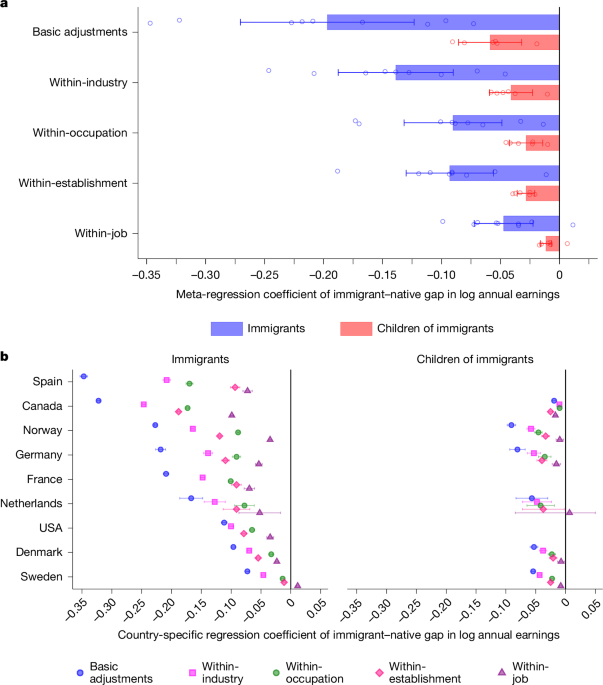The Immigrant-Native Pay Gap: A Deep Dive
Immigrants in high-income countries often face significant and persistent challenges in the labor market, while their native-born children typically experience economic progress. A recent study spanning nine European and North American countries reveals that about three-quarters of the immigrant-native earnings differences are due to immigrants being segregated into lower-paying jobs. This article explores the findings and implications of this groundbreaking research.
Key Findings
- Between-Job Segregation: The primary driver of the pay gap is the segregation of immigrant workers into lower-paying jobs, accounting for approximately 75% of the earnings disparity.
- Within-Job Inequality: The remaining 25% of the gap stems from unequal pay for the same work within the same employer.
- Intergenerational Progress: Native-born children of immigrants show significantly reduced earnings gaps, with within-job pay differences often negligible.
Policy Implications
The study highlights the importance of policies aimed at reducing job-level segregation, such as:
- Language and job training programs
- Job search assistance
- Recognition of foreign qualifications
- Settlement programs enhancing access to job-relevant networks
Policies targeting employer bias in hiring and promotion are also crucial, while measures ensuring equal pay for equal work may have a more limited impact.
Regional and Country Variations
The pay gap varies significantly by region of origin and destination country. For instance, immigrants from Sub-Saharan Africa and the Middle East face the largest earnings disadvantages, while those from Europe and North America experience smaller gaps.
Conclusion
The findings underscore the need for comprehensive policies that address both access to high-paying jobs and within-job pay inequality to bridge the immigrant-native pay gap effectively.





Comments
Join Our Community
Sign up to share your thoughts, engage with others, and become part of our growing community.
No comments yet
Be the first to share your thoughts and start the conversation!